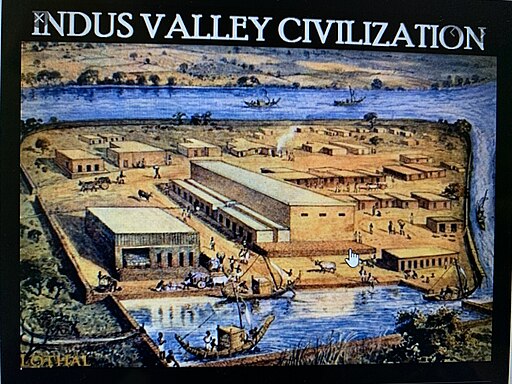Communication is one of my favourite aspects within the DeRose Method. When I first began practising in 2000, I was particularly keen on learning about a system for reinforcing behaviours which later Professor DeRose converted into a book called Furry Angels which I later translated into English. Recently, as I have been looking at ways
Mindfulness
Learn How To Experience Being Present In The Present With DeRose
What is Mindfulness?
Mindfulness is the ability every person has to be fully concentrated on the moment of existence, to be aware and experiencing the moment to the maximum.
However, beware: today this term has been used to exhaustion, it has been adopted by people who are not aware of its origins, the specific technique or even the limits of the technique. There is just a desire to sell a "solution".
On the other hand, if you are looking to understand and experience mindfulness training and even learn more about its origins, history and exercises. Well, you have found the right place!

Benefits of Mindfulness
with the DeRose Method
Deepened Awareness
Our method teaches you to cultivate a profound level of awareness, not only of your surroundings but also of your thoughts, emotions, and bodily sensations, enabling a richer experience of the present.
Enhanced Concentration
Learn techniques that significantly improve your concentration, allowing you to focus more effectively and reduce distractions in every aspect of your life.
Integration of Ancient and Modern
The DeRose Method blends ancient wisdom with contemporary science to offer a holistic approach to mindfulness, ensuring that practices are both timeless and relevant.
Practical, Everyday Application
We emphasize the application of mindfulness in daily activities, transforming routine tasks into opportunities for presence and engagement.
Emotional and Mental Clarity
Through mindfulness, develop the clarity needed to navigate life's challenges with equanimity, reducing stress and enhancing decision-making.
Building Meaningful Connections
Mindfulness extends beyond the self, improving how we connect with others through empathy, listening, and communication, fostering deeper, more meaningful relationships.

Do you want to learn more?
The Origin and History of Mindfulness
Mindfulness, originally known as dháraná — a Sanskrit term for mental concentration — has its roots in the ancient civilisation of the Indus Valley, over 5000 years ago. This civilisation occupied the territory that now is the border between India and Pakistan. These people developed amazing philosophies that formed the foundation of many Eastern Philosophies. The first written book which describes this concept was authored by Pátañjali in the 3rd century BCE.
One of the most interesting aspects of dháraná is that it is a necessary step for achieving meditation. If one ever wishes to experience meditation, they must experience and train mindfulness first. Is it not fascinating how such techniques, which arose millennia ago, are still so meaningful to us today?

Image source: wikipedia
Mindfulness and Modern Society

The term mindfulness was first used in the West in the 1970s with the objective of using this technique to help to manage stress. Over the years, our modern marketing machines have generated such confusion on this topic that it has become associated with it being a form of meditation (which it is not) as well as therapy to treat all sorts of ailments (which it cannot).
Mindfulness exploded with the rise of the internet in the 2000s, since then it has morphed to become something completely different from its origins. Today people expect that mindfulness is a “cure all” solution to reduce stress, improve mental health, regulate emotions and even become a type of therapy.
"At the beginning of every class, I train our students in dháraná, or mindfulness. This training enables them to fully embrace life at any moment they choose, at will, reaping the benefits of each experience. This is quality of life, where they can experience every moment to its fullest potential." -- Fabs Martins

Who is Mindfulness for?
In our view, everyone, from professionals seeking to perform better at their work to individuals striving to enrich their daily experiences, can benefit from this increased state of awareness, concentration and presence that mindfulness offers. his is for anyone who seeks to engage in life's activities with full presence and clarity.
While mindfulness can be used as a tool for managing stress or emotional challenges, it can also deliver so much more: making your experience of every moment you exist something remarkable and from which you can extract satisfaction.
Our approach is inclusive, designed for anyone looking to amplify their performance in work, elevate their quality of life, and truly immerse themselves in the richness of every moment. Mindfulness is a technique used within the DeRose Method, which our students train and improve their execution. It is a practice for all who wish to deepen their understanding of themselves and their potential, fostering a life lived consciously.
How do practice mindfulness?
The technique of mindfulness, or dháraná, is simple and uncomplicated. It is making use of the natural and innate ability that everyone has for mental concentration. There are many ways to engage with this ability. Normally, the best path to get started is through guiding your consciousness, your attention, towards the experience of your senses. As the individual becomes more aware of the subtle details they are able to quieten mental distractions and begin to experience more concentration. At this stage, you can start to make use of mindfulness by taking your point of concentration from your senses into anything else you would like, a conversation, your work, your drink or meal, your interaction with your children or partner etc.
The best way to understand how to execute this technique is with a practical example. This is an exercise I conducted with my students from DeRose TriBeCa in NYC but which can be replicated anywhere, be it a busy city or even surrounded by nature. Here is the exercise:
When I was working in New York City I used to take my students for a short walk from TriBeCa to Battery Park, next to the Hudson River, where we could train this technique. I would sit with the students and ask them to close their eyes so that they could beging to experience the city.
The first part of the exercise is to concentrate on what you hear
I would ask the students to keep their eyes closed and aim to hear all the sounds around them. Hear the sounds of construction, of the river, of helicopters, of car, of people talking, of children laughing, of ferry boats, even birds which could be singing. Once the students were concentrated on this aspect we would go deeper:
The second part of the exercise is to concentrate on another sense: olfaction
Now it is time to try to go more subtle, to smell the perfumes in the air, the scent of the river and the trees, all smells that they can identify, near at first and then further away, the more subtle the better.
Use the state
At this moment the distractions and dispersions of the mind have been attenuated and the students would be able to truly experience the moment, to have their full mental concentration of the activity they were undertaking at this precise moment. To be present in the moment of existence.

Do you want to learn more?
Types of Mindfulness training
For many years now, the world has been moving towards multitasking, that is, doing many things at the same time. Nowadays it is common for people to proudly claim that they have the ability to perform multiple tasks simultaneously, instead of exclaiming that they have the talent to focus on a single thing at a time and doing it quickly and well.
According to “A wandering Mind is an Unhappy Mind”, a paper from Harvard, in about half of all activities people conduct in their lives their minds wander (i.e. think of something else other than the task at hand). This was especially prevalent at work, and least prevalent when making love! The wandering of people’s minds was the most relevant factor in explaining unhappiness.
From the point of view of the DeRose Method, we know that this distraction predisposes one to make mistakes at work and in all other activities in life. Such distraction is also a major factor for unhappiness, because instead of fully enjoying the present moment, one is wandering about the future or the past or about how things could be different. It is like the person who can't fully enjoy a delicious meal because they are thinking about a hypothetical dessert.
This has driven a number off click-bait, modern marketing outlets to try to make something relatively simple into something complex.
In order for you to train your mindfulness all you need to do is to pay attention to your senses, avoid distractions and stay focused for a few moments on the experience of the moment.
It really is this simple.
Mindfulness at DeRose
The DeRose Method views mindfulness as a preliminary procedure to meditation; and the exercise of meditation as an important resource for human evolution.
However, how can we stop mental instability if our health is unstable? And if we are not emotionally stable, will we be able to successfully quiet the mind?
We know that, in order to fully dedicate ourselves to such mental exercises, it is advisable to:
- Care for your body offering it good nutrition, intelligent physical techniques, and organic purification activities;
- Care for your behaviours – we should cultivate good human relations, in addition to practising breathing, relaxation, and emotional reprogramming, among other elements, all present in the structure of the DeRose Method.
This is what we do at the DeRose Method. We offer our members and students a complete system that creates within you the ideal conditions for your success in achieving the states of consciousness of mindfulness and meditation. We offer the techniques to do so efficiently and enjoyably as well as the concepts that will support you I this journey.
Related articles on Mindfulness
September 6, 2024
One of the aspects which brings me the most satisfaction in the DeRose Method is how we can use its techniques and concepts to work more efficiently, to be more productive and to achieve more results. In this article I wanted to create a brief list of 10 ways in which you can use mindfulness
August 30, 2024
Often seen as functional, eating is actually one of the most important times for us to train our skill of concentration, of presence in the moment, of mindfulness. Many people have learned to eat while doing something else, be it watching something on their phones, answering emails or browsing the web – this makes the
August 22, 2024
In discussions about developmental practices for children, mindfulness is often suggested as a beneficial tool for enhancing focus and emotional regulation among the young. However, it is crucial to clarify that the millenary tradition of mindfulness was not conceived for children. The cognitive functions and brain physiology of children differ significantly from adults, and applying
August 8, 2024
In this article I wanted to share with you some insights about how the exercise of mindfulness can be connected with movement to produce amazing results. However, before we delve into the details I think that it is important for us to ensure that we are all talking about the same thing. Typically envisioned as a

Are you ready to try it for yourself?
Frequently Asked Questions
The term Mindfulness designates the exercise of observing your five senses. We could even say: “having your mind present in the present”. In other words, free of distractions and dispersions. This is the first step to be taken to achieve the most authentic meditation, which originated in Eastern philosophies over 5000 years ago.
Neither mindfulness, nor meditation (both of which emerged millennia before Buddhism), were intended for health improvement, even if such results do occur as side effects. It’s like dance, martial arts, or sports, which were not created with the purpose of weight loss, even though their practice will result in weight reduction.
There’s no doubt that both, mindfulness and meditation, produce positive effects on physical, emotional, and mental health, but these are just consequences. The purpose of these exercises is simply to avoid your rational mind, under the influence of emotions, interfering with your perception of reality, and to avoid it blocking the process of intuition, which is much more efficient than the mental process. The results are increased consciousness of daily life, to shine your consciousness on your habits, patterns, and decisions which are so automatic that they become invisible to us, most of the time.
The practise of mindfulness consists in connecting deeply with your five senses and in the process attain a high level of mental concentration on this task. There are many exercises to help us to achieve this state which we teach to our members.
Once you are well trained in being able to achieve mental concentration on your desired object and avoiding any distractions and dispersions, you can apply this skill to anything you want: while reading, eating, talking, working, studying, playing sports or even while relaxing, increasing exponentially the resulting experience of the moment.


